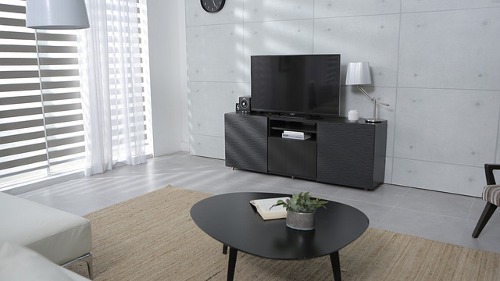It’s no secret that the best way to improve your TV reception is by having a good antenna. However, there are some instances when you have a great antenna, but you’re still having problems with reception. Sometimes there is an easy fix, like checking the signal strength indicator and making adjustments until the reception improves. Admittedly, it’s not always that simple. The information below sheds light on different steps you can take to improve your TV reception.


1. Elevate Your Antenna
In order for an antenna to work at optimal capacity, you’ll need to make sure it’s in the line of sight. That means your antenna needs to be found by transmission towers. One reason why this doesn’t happen is that the antenna isn’t positioned high enough. There are many objects that can get in the way when the antenna is located lower than it should be situated. For instance, mountains, buildings and trees can all get in the way of an antenna that isn’t high enough. It’s the reason why homes that sit high in the mountains tend to get great reception.
2. Install a Power Surge Protector
One way in which your TV reception might be affected by power surges that occur in the midst of a thunderstorm. This can be prevented by installing a power surge protector that has the potential to protect many components related to your TV. You may also want to consider grounding the coaxial cable and the antenna.
3. Reposition Your Antenna
If your antenna is not properly positioned, there’s a good chance of poor TV reception. The antenna must be pointed in the direction of the radio frequency. Sometimes this is achieved best with antennas that are multidirectional. If you don’t have a multidirectional antenna, try repositioning it by just a few inches at first and continue moving it until you see an improvement.
4. Protect Your Antenna from the Environment
Another issue that can negatively affect your TV reception is poor weather, including sun, wind, rain and snow. A common issue that starts to happen over a period of time is the antenna and related equipment starts to erode. It’s best to choose a frame and antenna that’s waterproof. Even if you have the right parts, you still need to conduct inspections periodically. It’s best to address problems early before they get worse.
5. Improve Wiring Insulation
When you have poor TV reception, half the battle is figuring out what’s causing the problem. Sometimes this is easier said than done. Sometimes the problem is with the insulation of the wiring. If the wiring is not adequately protected, there’s a good chance that your TV reception will suffer because of electromagnetic interference. If this is the problem, you will likely need help from professionals to improve the insulation.
6. Relocate Your Antenna
When initially installing an antenna, sometimes mistakes are made and it ends up being placed in a spot that isn’t quite the best place. Relocating the antenna will take time and effort, but it can make a tremendous difference in the outcome. There’s a chance that you’ll need to move the antenna to an entirely different location.
7. Add Another Antenna
It’s not uncommon for people to get a secondary antenna because they are experiencing poor reception. This is known as stacking and it’s a practice that’s often used when the primary antenna contains VHF or UHF technology. The second antenna is typically positioned a few feet from the first antenna. The two antennas are then connected using a signal combiner.
8. Get an Antenna Rotator
The purpose of an antenna rotator is to automatically turn the antenna in the direction of the towers as necessary. This is a convenient way to make sure you don’t experience any reception issues related to positioning. Without having an antenna rotator, you’ll have to rotate the antenna manually.
If you need help, consider finding an expert that provides TV antenna Sunshine Coast solutions to improve your reception in very little time.


























